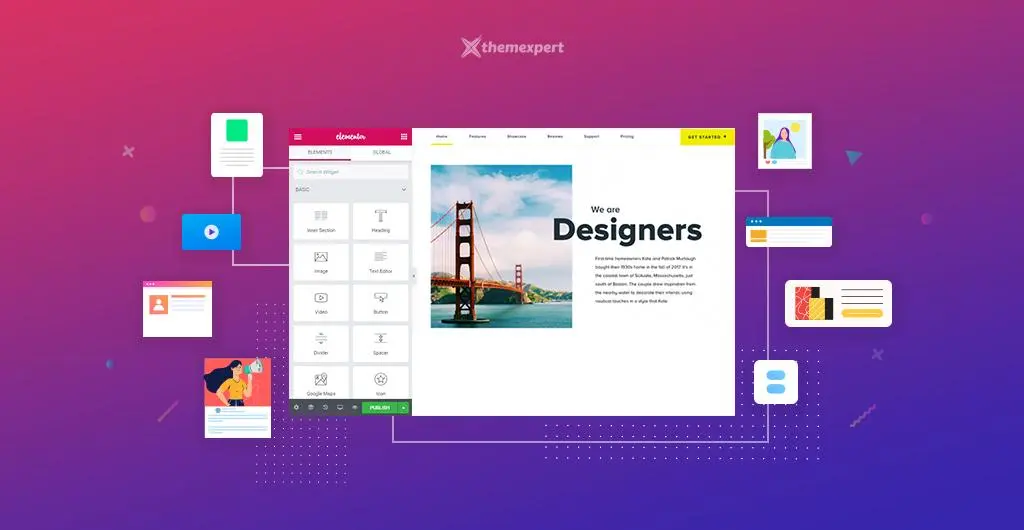Contents
- Elementor Pro Essential Plan Changes in 2025
- Elementor Essential vs Advanced Plan: Key Differences
- How Elementor Pricing Changes Impact Business Owners
- Alternatives to Elementor Pro in 2025
- Action Steps for Business Owners
- Choosing the Best Elementor Pro Plan for Your Business
- Frequently Asked Questions About Elementor Pro Plan Changes
For small and medium-sized business owners, a visually appealing, functional website is essential. WordPress combined with Elementor has long been a top choice for building professional websites without heavy coding.
However, Elementor’s Pro Essential plan has undergone significant changes as of December 4th, 2023, and these adjustments could directly impact your website strategy, ongoing costs, and scalability.
This guide explains the plan changes, their implications for businesses, and actionable steps to optimize your website investments.
Elementor Pro Essential Plan Changes in 2025
What Changed in the Elementor Essential Plan
Elementor revised its Pro Essential subscription to focus on sustainable development of both free and Pro tools. The key updates:
- Existing Subscribers (before Dec 4, 2023): Retain all original Essential features. Some new advanced tools may require a higher-tier upgrade.
- New Subscribers (after Dec 4, 2023): Advanced features, such as Popup Builder, full WooCommerce support, and collaboration tools, are now limited to higher-tier plans (Advanced, Expert, Agency).
- Other Pro Plans & Hosting Tiers: Remain unchanged, offering full access to all advanced features.
Elementor Pro Features Now in Higher Tiers
- Popup Builder
- WooCommerce Builder (full support)
- Collaboration tools and advanced role management
- New users may face higher costs for features previously included in Essential.
- E-commerce and client-focused websites may require a more strategic subscription choice.
Elementor Essential vs Advanced Plan: Key Differences
Popup Builder & Marketing Tools
The Popup Builder, once part of Essential, now requires Advanced or higher. Businesses relying on lead generation may need to factor in this cost.
WooCommerce Builder and E-Commerce Needs
Full WooCommerce tools are no longer in Essential. Online stores with custom checkout pages, product templates, or advanced store design will need Advanced or Expert.
Collaboration & Role Management
Multi-user sites or agencies managing teams may outgrow Essential quickly since role-based features are locked behind higher plans.
How Elementor Pricing Changes Impact Business Owners
Advanced tools now require higher-tier plans, which may increase overall project costs.
Strategic Planning for Website GrowthClearly define your website’s short- and long-term needs to avoid unexpected upgrades.
E-Commerce Considerations for SMEsThe shift of WooCommerce features to Advanced and above increases costs for online stores that need flexibility.
Other considerations:- More segmented features may improve cost-efficiency if you only need basics.
- Business owners may explore alternative solutions to align functionality with budget.
Alternatives to Elementor Pro in 2025
Gutenberg + Block Plugins
Other Page Builders
Action Steps for Business Owners
Assess Current & Future Needs
- List essential features for the next 1–3 years (e.g., popups, WooCommerce, or role management).
Compare Pricing Tiers Over Time
- Review Essential, Advanced, Expert, and Agency plans.
- Consider the total cost of ownership, not just monthly fees.
Monitor Roadmap for Existing Subscribers
- You retain current features but may need upgrades for new tools.
Consult a Website Strategist
- Professionals, like the Webora Creative team, can help assess pricing, feature requirements, and long-term scalability.
Choosing the Best Elementor Pro Plan for Your Business
Essential Plan for Basic Websites
Best for businesses that only need core design features without advanced marketing or e-commerce.
Advanced Plan for Growing Businesses
Ideal for SMEs planning popups, WooCommerce stores, or advanced customization.
Expert & Agency Plans for Teams
Built for larger businesses or agencies that need collaboration and unlimited sites.
Elementor’s Essential plan changes highlight the dynamic nature of web tools. For business owners, this means re-evaluating your technology stack regularly to ensure it supports growth without unnecessary costs.
Frequently Asked Questions About Elementor Pro Plan Changes
- Yes, if your website only needs basic design tools, Elementor Pro Essential is still cost-effective. However, if you require advanced features like popups, WooCommerce customization, or collaboration tools, you’ll need to upgrade to Advanced or higher.
-
As of December 4, 2023, the Popup Builder, full WooCommerce Builder, and advanced role management have moved out of the Essential plan. These are now part of Elementor’s Advanced, Expert, or Agency tiers.
- Yes, most online stores will need at least the Advanced plan. Essential no longer includes full WooCommerce support, meaning businesses that need custom product pages or checkout designs should choose Advanced or above.
- Essential: Best for simple business websites with basic customisation.
- Advanced: Adds Popup Builder, WooCommerce features, and more flexibility for growing businesses.
- Yes, Gutenberg with plugins like Kadence Blocks or GenerateBlocks can be a lightweight alternative. Other page builders such as Bricks, Beaver Builder, Oxygen, and Divi also offer competitive features.
-
Not immediately. Existing subscribers keep their current features, but future updates and advanced tools may require upgrading to a higher plan. Review Elementor’s roadmap and your business needs before making changes.


